
The geography of Guinea-Bissau is that of low coastal plains bordering the Atlantic Ocean. The country borders Senegal in the north and Guinea in the southeast.

The Hoggar Mountains are a highland region in the central Sahara, southern Algeria, along the Tropic of Cancer. The mountains cover an area of approximately 550,000 square km.

Venerida is an order of mostly saltwater but also some freshwater bivalve molluscs. This order includes many familiar groups such as many clams that are valued for food and a number of freshwater bivalves.

Arli National Park, often called Arly, is a national park located in Tapoa Province, southeastern Burkina Faso. It adjoins Benin's Pendjari National Park in the south and the Singou Reserve in the west.
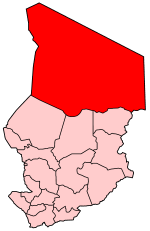
The Borkou-Ennedi-Tibesti (BET) was until 2008 one of the then 18 regions of Chad, its capital being Faya-Largeau. It comprised the former Borkou-Ennedi-Tibesti Prefecture. Most of the region was part of the Sahara desert.

The painted tree-rat is a species of spiny rat from Brazil, restricted to north-eastern Bahia in eastern Brazil. It is the only species in the genus Callistomys.
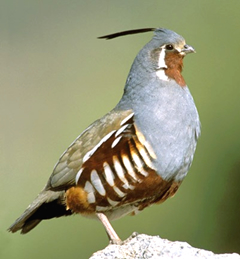
The mountain quail is a small ground-dwelling bird in the New World quail family. This species is the only one in the genus Oreortyx, which is sometimes included in Callipepla. This is not appropriate, however, as the mountain quail's ancestors have diverged from other New World quails earlier than the bobwhites, no later than 6 mya.
The genus Neacomys, also known as bristly mice because of their spiny fur, includes several species of rodents in the tribe Oryzomyini of family Cricetidae. It is most closely related to Oligoryzomys, Oreoryzomys, and Microryzomys. Neacomys species are mainly found in the Amazon basin, but N. pictus occurs in Panama and N. tenuipes in montane Colombia.

The painted big-eared mouse is a species of rodent in the family Cricetidae. It is found in Bolivia and Peru, and possibly Chile.
Neacomys pictus, also known as the painted neacomys or painted bristly mouse, is a species of rodent in the genus Neacomys of family Cricetidae. It is found only in Panama.
Callixalus is a genus frogs in the family Hyperoliidae. It is monotypic, being represented by a single species, Callixalus pictus. It is found in the eastern Democratic Republic of the Congo and western Rwanda. It is sometimes known as the African painted frog.
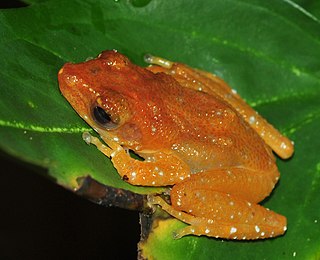
Nyctixalus pictus, also known as cinnamon frog, cinnamon treefrog, cinnamon bush frog, painted Indonesian treefrog, and white-spotted treefrog, etc., is a species of frog in the family Rhacophoridae. It is found in the Malay Peninsula, the Philippines, and parts of the Greater Sunda Islands.
The painted spiny pocket mouse is a species of rodent in the family Heteromyidae. It is found in Mexico and the northern tip of Guatemala. It was formerly placed in the genus Liomys, which is now recognized to be paraphyletic and has been subsumed into Heteromys.

The painted electric ray or variegated electric ray is a poorly known species of numbfish, family Narcinidae, native to the western Atlantic Ocean from southeastern Venezuela to the mouth of the Amazon River in Brazil. It is common on soft substrates at a depth of 2–120 meters.

Katcha is a village in the Bassar Prefecture in the Kara Region of north-western Togo.
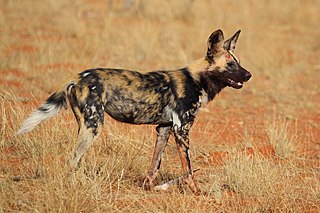
The African wild dog, also called the painted dog, or Cape hunting dog, is a canine native to sub-Saharan Africa. It is the largest indigenous canine in Africa, and the only extant member of the genus Lycaon, which is distinguished from Canis by dentition highly specialised for a hypercarnivorous diet, and a lack of dewclaws. It is estimated that about 6,600 adults including 1,400 mature individuals live in 39 subpopulations that are all threatened by habitat fragmentation, human persecution and outbreaks of diseases. As the largest subpopulation probably consists of less than 250 individuals, the African wild dog is listed as endangered on the IUCN Red List since 1990.

Suillus spraguei is a species of fungi in the family Suillaceae. It is known by a variety of common names, including the painted slipperycap, the painted suillus or the red and yellow suillus. Suillus spraguei has had a complex taxonomical history, and is also frequently referred to as Suillus pictus in the literature. The readily identifiable fruit bodies have caps that are dark red when fresh, dry to the touch, and covered with mats of hairs and scales that are separated by yellow cracks. On the underside of the cap are small, yellow, angular pores that become brownish as the mushroom ages. The stalk bears a grayish cottony ring, and is typically covered with soft hairs or scales.
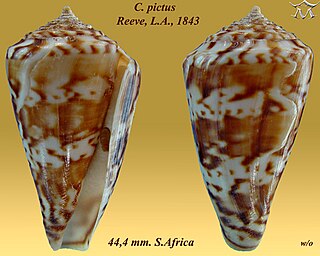
Conus pictus is a species of sea snail, a marine gastropod mollusk in the family Conidae, the cone snails and their allies.

Poekilocerus pictus is a large brightly coloured grasshopper found in the Indian subcontinent. Nymphs of the species are notorious for squirting a jet of liquid up to several inches away when grasped. It is also known as Aak grasshopper or locally in few tribal areas called titighodo.

The West African wild dog is a subspecies of the African wild dog native to West Africa. It is classified as Critically Endangered by IUCN, as it was estimated that 70 adult individuals are left in the wild.















